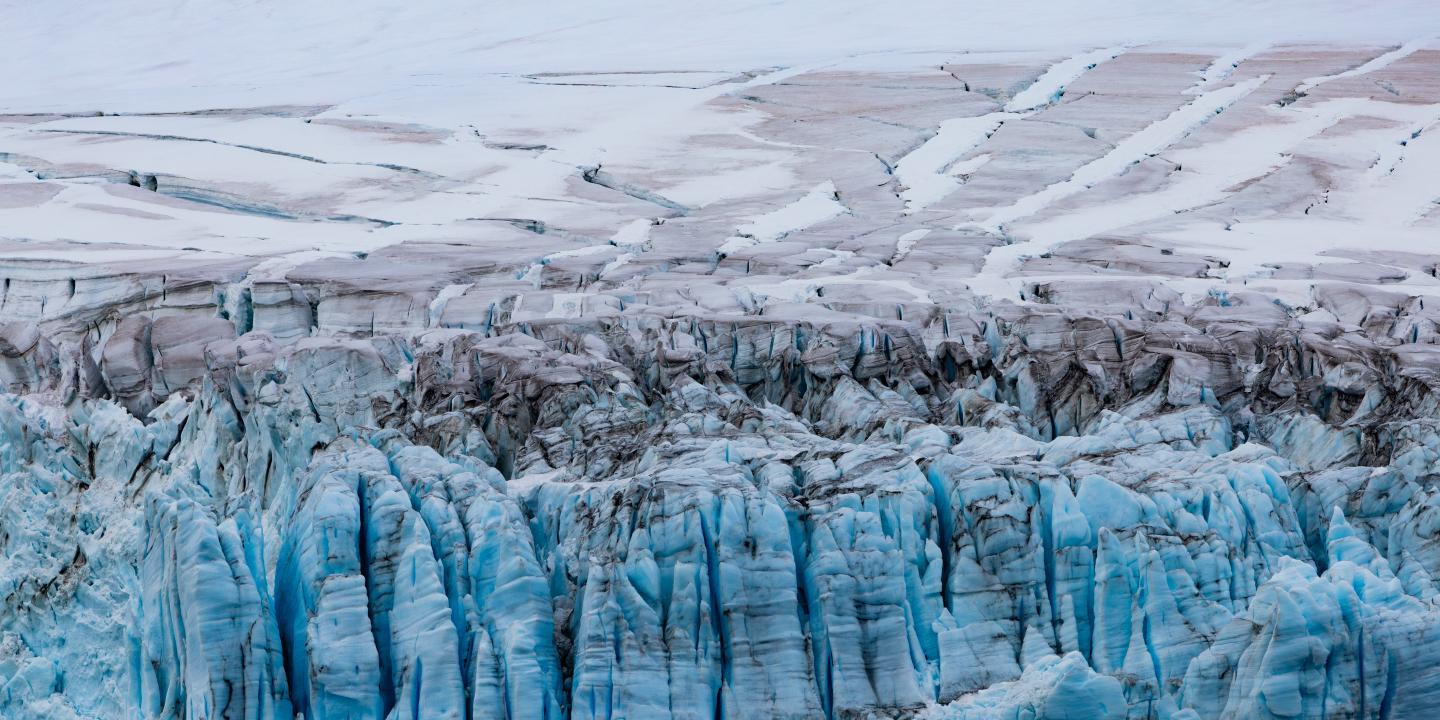Rapid changes in the Antarctic are ‘stark warning’ to the world – Oceanographic Magazine

Report on Antarctic Climate Change and its Implications for Sustainable Development Goals
Date: 29/09/2025
1.0 Executive Summary
A recent scientific assembly at the Royal Society in London has issued a stark warning regarding the rapid and extreme environmental changes occurring in Antarctica. These changes are transpiring faster than previously anticipated, presenting significant threats to the achievement of multiple Sustainable Development Goals (SDGs). The crossing of irreversible tipping points is an imminent risk, with global consequences including accelerated climate change, substantial sea-level rise, and severe disruption to weather patterns and ecosystems. This report outlines the direct impacts of these changes on key SDGs, emphasizing the urgent need for global action.
2.0 Direct Challenges to SDG 13: Climate Action
The developments in Antarctica represent a critical failure in global climate action and threaten to exacerbate the climate crisis, directly undermining SDG 13. Key observations include:
- Accelerated Global Heating: The region is approaching dangerous tipping points that could intensify global heating.
- Extreme Weather Events: The Southern Ocean, having absorbed a majority of excess heat from greenhouse gas emissions, is fueling more powerful storms, heatwaves, and extreme rainfall globally.
- Physical Indicators: The collapse of ice shelves and record-low sea ice levels serve as clear indicators of profound climatic disruption.
Scientists stress that urgent and drastic cuts to greenhouse gas emissions are essential to mitigate these impacts and align with the objectives of SDG 13.
3.0 Threats to SDG 14: Life Below Water
The stability of marine ecosystems, a core component of SDG 14, is under severe threat from changes originating in the Antarctic region. The primary concerns are:
- Food Web Collapse: Crucial species such as krill, which form the foundation of the Antarctic food web, are at risk, jeopardizing the entire ecosystem.
- Habitat Destruction: Fragile deep-sea coral and sponge habitats, which support significant biodiversity, are endangered.
- Disruption of Planetary Regulation: These marine ecosystems play a vital role in regulating the planet’s carbon balance, and their degradation compromises this essential function.
4.0 Cascading Impacts on Global Sustainability Goals
The consequences of Antarctic change extend far beyond the polar region, creating cascading challenges for several other SDGs. The interconnected risks are as follows:
- SDG 11 (Sustainable Cities and Communities): Scientists warn that if key ice sheet thresholds are passed, sea levels could rise by more than ten metres over the coming centuries. This would devastate coastal cities, communities, and infrastructure worldwide, rendering many settlements uninhabitable.
- SDG 2 (Zero Hunger): The disruption to marine ecosystems, particularly the decline of krill populations, threatens the viability of global fisheries that are essential for food security. Furthermore, extreme weather patterns disrupt global agriculture.
- SDG 15 (Life on Land): Rising sea levels and altered weather patterns will have devastating consequences for coastal and terrestrial ecosystems globally, leading to significant biodiversity loss.
5.0 Conclusion: An Urgent Call for Global Partnership (SDG 17)
The evidence presented confirms that “What happens in Antarctica affects us all.” The potential for changes to spread rapidly on a global scale, with devastating consequences, necessitates a coordinated international response. Achieving the 2030 Agenda for Sustainable Development is contingent upon addressing the Antarctic climate crisis. This situation underscores the critical importance of SDG 17 (Partnerships for the Goals), demanding immediate and collaborative global action to reduce emissions, build resilience, and prevent the crossing of dangerous and irreversible environmental thresholds.
1. Which SDGs are addressed or connected to the issues highlighted in the article?
Detailed Explanation
- SDG 13: Climate Action – The article is fundamentally about the impacts of climate change. It explicitly mentions the need for “Urgent action to cut greenhouse gas emissions” and discusses consequences like “global heating,” “powerful storms, heatwaves, and rainfall globally.” This directly aligns with the goal of taking urgent action to combat climate change and its impacts.
- SDG 14: Life Below Water – The article highlights significant threats to marine ecosystems. It states that “crucial species such as krill – the hub of the Antarctic food chain – and deep-sea coral and sponge habitats are under threat.” It also notes that the “Southern Ocean surrounding Antarctica absorbs most of the excess heat,” which impacts marine life. This connects directly to the goal of conserving and sustainably using the oceans, seas, and marine resources.
- SDG 11: Sustainable Cities and Communities – The article warns of direct threats to human settlements. It states that if ice sheets pass key thresholds, “sea levels could rise by more than ten metres over the coming centuries, threatening coastal cities, communities, and infrastructure across the globe.” This addresses the goal of making cities and human settlements inclusive, safe, resilient, and sustainable, particularly in the face of climate-related disasters.
2. What specific targets under those SDGs can be identified based on the article’s content?
Detailed Explanation
- Under SDG 13: Climate Action
- Target 13.1: Strengthen resilience and adaptive capacity to climate-related hazards and natural disasters in all countries. The article’s warning about “more powerful storms, heatwaves, and rainfall globally” and the need to “strengthen resilience” directly relates to this target.
- Target 13.2: Integrate climate change measures into national policies, strategies and planning. The call for “Urgent action to cut greenhouse gas emissions” implies the need for policy-level interventions as described in this target.
- Under SDG 14: Life Below Water
- Target 14.2: By 2020, sustainably manage and protect marine and coastal ecosystems to avoid significant adverse impacts. The article’s focus on threats to “fragile ecosystems,” “krill,” and “deep-sea coral and sponge habitats” directly corresponds to the need to protect these marine environments.
- Target 14.3: Minimize and address the impacts of ocean acidification, including through enhanced scientific cooperation at all levels. The statement that the “Southern Ocean surrounding Antarctica absorbs most of the excess heat caused by greenhouse gas emissions” points to changes in ocean chemistry and temperature, which are central to this target.
- Under SDG 11: Sustainable Cities and Communities
- Target 11.5: By 2030, significantly reduce the number of deaths and the number of people affected and substantially decrease the direct economic losses relative to global gross domestic product caused by disasters, including water-related disasters. The warning about rising sea levels “threatening coastal cities, communities, and infrastructure” is a direct reference to the water-related disasters this target aims to mitigate.
3. Are there any indicators mentioned or implied in the article that can be used to measure progress towards the identified targets?
Detailed Explanation
- Rate of Greenhouse Gas Emissions: The article explicitly calls to “cut greenhouse gas emissions,” implying that the volume and rate of these emissions are a key indicator of whether climate action is being taken.
- Sea Ice Extent and Ice Shelf Stability: The mention of “collapsing ice shelves and record-low sea ice” serves as a direct, measurable indicator of the physical impacts of climate change in the Antarctic.
- Sea Level Rise: The article warns that “sea levels could rise by more than ten metres,” making the rate of sea-level rise a critical indicator for assessing the threat to coastal communities (SDG 11).
- Ocean Heat Content: The statement that the “Southern Ocean… absorbs most of the excess heat” implies that measuring ocean temperature and heat content is an indicator of the stress on marine ecosystems (SDG 14).
- Health of Marine Ecosystems and Key Species: The article’s concern for “crucial species such as krill” and “deep-sea coral and sponge habitats” suggests that the population health, biodiversity, and extent of these species and ecosystems are vital indicators of the health of the Antarctic marine environment.
4. SDGs, Targets, and Indicators Table
| SDGs | Targets | Indicators |
|---|---|---|
| SDG 13: Climate Action |
|
|
| SDG 14: Life Below Water |
|
|
| SDG 11: Sustainable Cities and Communities |
|
|
Source: oceanographicmagazine.com

What is Your Reaction?
 Like
0
Like
0
 Dislike
0
Dislike
0
 Love
0
Love
0
 Funny
0
Funny
0
 Angry
0
Angry
0
 Sad
0
Sad
0
 Wow
0
Wow
0















































/environment-climate-change-and-health-(ech)/water-sanitation-hygiene-and-health-(wsh)/landfill-tuvalu-36092.tmb-1200v.jpg?sfvrsn=5c21fe40_1#)


.jpg.webp?itok=0ZsAnae9#)

























